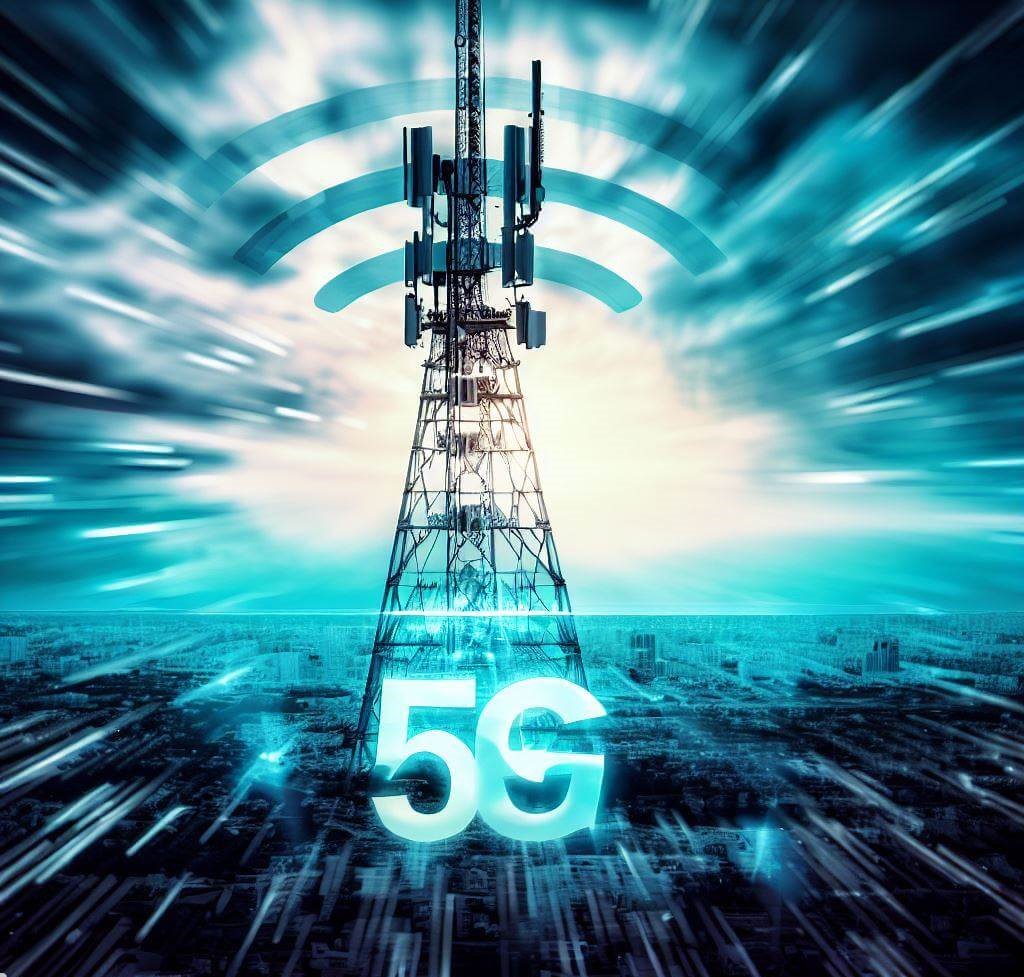Introduction
As a passionate advocate for electromagnetic field (EMF) protection, I’ve found myself increasingly entangled in discussions about 5G technology and its implications for human health. 5G, standing for fifth-generation technology, brings the promise of unprecedented speed and interconnectivity. But with these advancements come potential health risks associated with increased exposure to EMFs. Navigating the world of 5G can feel like stepping into an exciting yet overwhelming sci-fi universe, but worry not. I am here to guide you through it, helping you to better understand the complex landscape of 5G EMFs.
5G EMF Explained
The Mechanics of 5G
To grasp the concerns surrounding 5G EMFs, it’s crucial first to understand the mechanics of this technology. Unlike the previous generations of mobile networks, 5G operates across a wide array of frequencies, with high-band 5G, also known as millimeter wave, employing frequencies from 24 GHz up to a staggering 100 GHz. These frequencies are significantly higher than those used in 4G networks.
These higher frequencies allow for rapid data transmission, painting a future of near-instantaneous downloads and seamless streaming. However, these high frequencies come with a limitation: they don’t travel as far. To overcome this obstacle, a denser network of cell sites or antennas is required. These antennas, positioned closer together, result in an increased prevalence of EMFs around us.
EMFs in 5G Technology
Every device connected to a 5G network emits EMFs as they transmit data. This electromagnetic radiation is an invisible part of our environment, emitted by natural sources like the sun, as well as human-made sources like our beloved smartphones, tablets, and Wi-Fi routers.
However, the high-frequency waves used by 5G are a relatively new addition to our daily EMF exposure. The smaller wavelengths of these high-frequency bands can carry more data, facilitating the rapid speeds associated with 5G. But these smaller, more concentrated waves may also have different biological impacts compared to the longer, less concentrated waves of older cellular technologies, sparking a flurry of research and raising public concerns about their safety.

Health Concerns Related to 5G EMFs
The increased exposure to EMFs due to the deployment of 5G has raised significant health concerns among researchers, healthcare professionals, and the general public. Given that 5G technology utilizes higher frequency bands that have not been widely used for consumer technology before, there is a lack of comprehensive, long-term research on how these higher-frequency EMFs affect our bodies.
Nonetheless, the existing body of evidence on EMFs in general suggests a connection between exposure and various health issues. These range from insomnia, headaches, and fatigue, to more severe conditions like infertility, cognitive disorders, and even certain types of cancer. It’s important to note, though, that the research in this area is ongoing, and a clear consensus on the extent and nature of these risks has yet to be reached.
Biological Effects of 5G EMFs
The interaction of 5G EMFs with our bodies is a subject of ongoing research. Existing evidence suggests that EMFs can cause biological effects by inducing electrical currents in tissues or cells. This can lead to changes in cellular function and possibly disrupt normal bodily processes.
One of the main concerns related to 5G is the fact that the higher-frequency waves it uses are more readily absorbed by the human body compared to lower frequencies. This absorption could potentially lead to heating effects, causing an increase in body temperature. While the impact of this localized heating is not fully understood, research indicates it could potentially lead to tissue damage or other adverse health effects.
Key Studies on 5G EMFs and Health
There have been several significant studies conducted on the health impacts of 5G EMFs. For instance, the National Toxicology Program (NTP) conducted an extensive multi-year study on the health effects of 2G and 3G cellular frequencies. The study found clear evidence of tumors in the hearts of male rats exposed to high levels of these EMFs.
Meanwhile, a review of available scientific literature conducted by the International Commission on Non-Ionizing Radiation Protection (ICNIRP) in 2020 found that the primary health effect of radiofrequency EMFs, including 5G, is heating of exposed tissue. However, the ICNIRP maintains that the limits it has set for EMF exposure are sufficient to protect against this.
It’s important to note, however, that while these studies provide valuable insights, the research is still evolving, and more studies are needed to fully understand the potential health effects of 5G EMFs.
Current Safety Standards for 5G EMFs
The safety standards for 5G EMFs are largely governed by international organizations like the International Commission on Non-Ionizing Radiation Protection (ICNIRP) and the World Health Organization (WHO). According to the ICNIRP, the primary health effect of radiofrequency EMFs, including 5G, is heating of exposed tissue, but the exposure limits they have set are designed to prevent this from happening.
These standards are based on a measure known as the Specific Absorption Rate (SAR), which quantifies how much RF energy is absorbed by the body. While the actual limits can vary depending on numerous factors (like the frequency of the EMF and the duration of exposure), in general, the current guidelines dictate that the SAR for a device should not exceed 1.6 watts per kilogram.
Global Regulations and Guidelines
Globally, different countries and regions follow varying sets of regulations and guidelines when it comes to 5G EMF exposure. In the US, for instance, the Federal Communications Commission (FCC) relies on SAR limits and other guidelines recommended by the ICNIRP and the IEEE.
In Europe, the European Union follows the recommendations of the ICNIRP as well, which are then incorporated into the regulations of individual member countries. There’s also an ongoing debate about the possibility of setting even stricter standards in some regions, which would necessitate technological adjustments to 5G infrastructure.
Criticisms of Existing Safety Standards
Despite the existing safety standards, there’s been significant criticism from scientists, health professionals, and advocacy groups who argue that the current regulations are insufficient. Critics contend that the SAR limits don’t account for non-thermal biological effects that could potentially be caused by long-term exposure to EMFs.
Furthermore, critics point out that the standards are largely based on research conducted using earlier generations of wireless technology (like 2G and 3G), and may not be applicable to the higher frequencies used by 5G. There’s a call for comprehensive, long-term research on the potential health impacts of 5G EMFs, and a revision of safety standards based on the findings of such research.

Proposals for More Protective 5G EMF Safety Standards
Given the controversy and ongoing debate surrounding the potential health effects of 5G EMFs, there have been several proposals put forward for more protective safety standards. One common proposal is to lower the exposure limits for RF radiation, as some scientists and health experts believe the current standards are too lenient.
Another proposal is to establish “white zones” or areas free from wireless radiation, especially in sensitive places like schools, hospitals, and residential areas. This would involve creating infrastructure and city planning guidelines that take into account the locations of cell towers and other 5G equipment.
There is also the suggestion to better inform the public about EMFs and potential risks, such as including warning labels on wireless devices similar to those on tobacco and alcohol products.
Recommendations from Scientists
Many scientists and health professionals are calling for more comprehensive research on the long-term health effects of 5G EMFs. They recommend performing large-scale epidemiological studies, particularly those that look at potential links between 5G exposure and the incidence of chronic diseases such as cancer, neurodegenerative disorders, and immune system dysfunction.
Furthermore, they advise adopting a precautionary approach until more definitive scientific data is available. This could involve implementing interim exposure standards that are lower than current ones, especially for vulnerable populations such as children, the elderly, and those with pre-existing health conditions.
The Role of the Telecom Industry in Ensuring 5G Safety
In addition to the responsibility of the regulatory bodies, there’s also a significant role for the telecommunication industry in ensuring the safety of 5G. As the developers and providers of these technologies, telecom companies can take several steps to address public health concerns about 5G EMFs.
To start with, transparency is crucial. Telecom companies should provide clear, accessible information about the safety measures they have in place to manage EMF emissions. They can engage with consumers, researchers, and public health organizations to address concerns and share knowledge about 5G technology and its safety.
Additionally, they should invest in research and development to find ways to minimize EMF emissions. Innovations that can reduce EMF exposure without compromising the functionality of 5G technology could serve as a major breakthrough.
Telecom companies should also work with scientists and engineers to establish protocols that allow 5G technology to automatically adjust its power to the lowest possible level necessary for quality service. This dynamic power management would lead to lower average EMF emissions.
Lastly, participating actively in the formulation of safety standards can help to ensure they are grounded in the realities of technological development. Industry professionals have detailed knowledge of 5G technology that can contribute to creating robust, scientifically sound safety standards.
In sum, telecommunication companies, by committing to transparency, investing in research and development, actively contributing to safety standard discussions, and working on dynamic power management solutions, can play a substantial role in ensuring 5G safety. This active engagement can help to build trust with consumers and allow us all to enjoy the benefits of 5G technology with greater peace of mind.

Best Practices from Other Countries
Looking at the practices followed by different countries can provide valuable insights. For instance, Belgium has imposed strict radiation limits for telecom equipment, while certain areas in Italy have adopted biologically-based exposure standards that are much lower than those recommended by the ICNIRP.
In France, the ANFR (National Agency for Radiofrequency Frequencies) regularly measures exposure levels in various environments, and the results are publicly available. They have also banned Wi-Fi in nursery schools and restrict its use in primary schools.
Switzerland is another country leading in protective measures, with cantons like Geneva adopting stricter standards. Moreover, they are one of the few nations mandating lower EMF exposure limits in sensitive areas like schools and hospitals.
These practices underscore the potential for establishing more protective 5G EMF safety standards globally and can serve as models for other countries and regions to consider.
Taking Personal Steps for 5G EMF Safety
While the debate continues about 5G EMF safety standards and regulations, there are several steps individuals can take to limit their exposure to EMFs from 5G and other wireless technologies. These protective measures do not require a deep understanding of the technology but involve simple lifestyle changes and habits that can significantly reduce EMF exposure.
Practical Tips for EMF Protection
Here are some practical tips that you can implement in your daily life:
- Limit wireless device usage: As much as possible, limit your use of devices that emit EMFs, including smartphones, tablets, laptops, and Wi-Fi routers. When these devices are not in use, switch them off or put them in airplane mode.
- Maintain distance: EMF exposure decreases significantly with distance. Keep wireless devices away from your body when not in use, and avoid carrying them in your pockets or close to your body.
- Use wired alternatives: Where possible, opt for wired alternatives. For example, use wired earphones instead of Bluetooth headsets, and consider using a wired internet connection instead of Wi-Fi.
- Healthy living: A healthy lifestyle can strengthen your body’s natural defense system against the potential effects of EMFs. Regular exercise, a balanced diet, and adequate sleep can enhance your body’s resilience.
Advocacy for Safer Technology Use
Beyond personal measures, individuals can also contribute to a broader societal effort to promote safer use of technology. This can be done by advocating for stricter safety standards and regulations for 5G EMFs. Public engagement in this issue can involve various activities such as:
- Spreading awareness: Inform your friends, family, and community about the potential risks of 5G EMFs and the importance of safety standards.
- Supporting research: Encourage and support research into 5G technology, its potential health impacts, and effective safety measures.
- Political action: Contact your local, regional, and national representatives to express your concerns about 5G EMF safety, and urge them to advocate for stricter standards and regulations.
In conclusion, while we enjoy the benefits of advanced technology like 5G, it’s crucial to be proactive in understanding the potential risks associated with it and taking appropriate steps to protect our health and well-being.
Conclusion
While 5G offers tremendous potential for technological advancements, it’s crucial that safety remains paramount. Current safety standards for 5G EMFs are a point of contention among experts and the public, leading to calls for a reassessment and potential overhaul of these standards. Proactive measures must be taken at all levels, from individual efforts to reduce exposure to collective advocacy for stricter regulations.
Despite the existing uncertainties, one thing is clear – further research is essential to fully comprehend the impacts of 5G EMFs on human health. As we navigate this era of rapid technological evolution, maintaining a balanced perspective will help us make the most of these advancements while protecting our health and well-being.
FAQs
1. Are 5G EMFs harmful to human health?
While some research suggests potential health impacts, there’s no definitive proof that 5G EMFs are harmful to human health. However, as 5G is relatively new, more research is needed to fully understand its potential impacts.
2. How can I reduce my exposure to 5G EMFs?
There are several ways to reduce your exposure to 5G EMFs, such as limiting the use of wireless devices, maintaining distance from these devices, using wired alternatives where possible, and leading a healthy lifestyle to enhance your body’s natural defenses.
3. Are there safety standards in place for 5G EMFs?
Yes, there are safety standards set by international bodies like the International Commission on Non-Ionizing Radiation Protection (ICNIRP). However, these standards are under scrutiny and debates exist about their adequacy.
4. How can I advocate for safer use of 5G technology?
You can spread awareness about the potential risks of 5G EMFs, support research into this technology, and engage with your local and national representatives to express your concerns and advocate for stricter safety standards.
5. Is 5G the only source of EMFs?
No, EMFs are emitted by many everyday devices, including mobile phones, Wi-Fi routers, and microwave ovens. However, the introduction of 5G has raised new concerns due to the higher frequency and intensity of the EMFs it generates.

